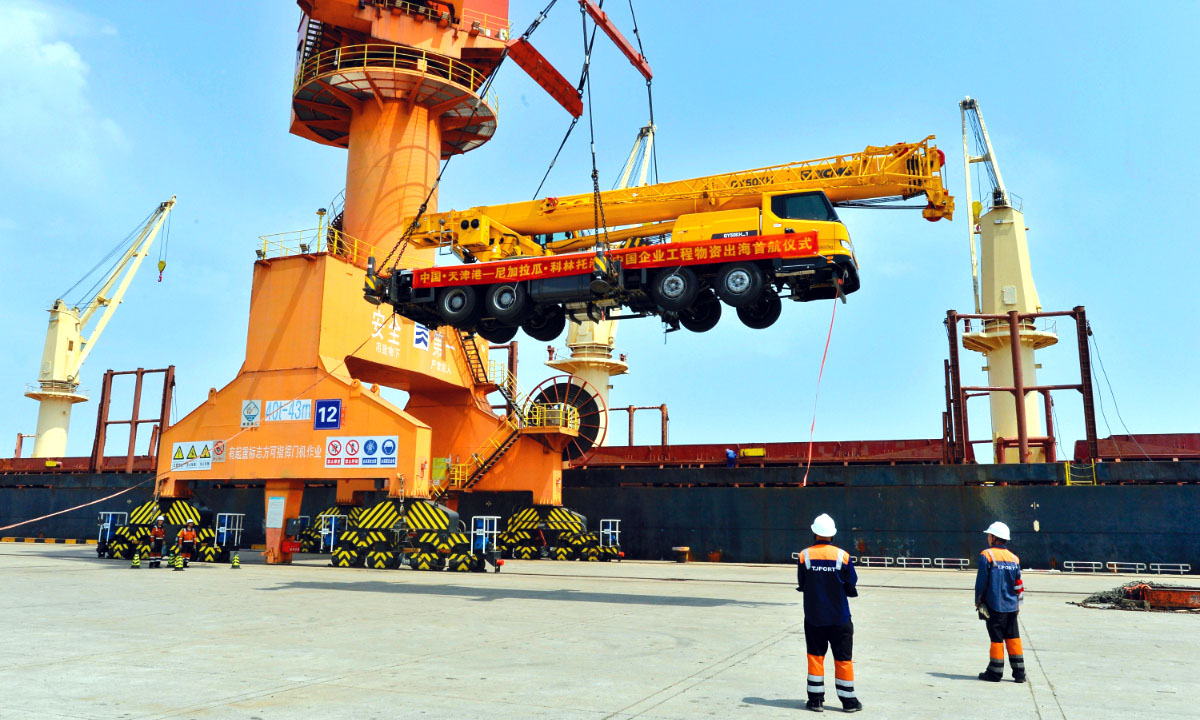China-proposed initiative is helping build a global network of connectivity

Nicaraguan Ambassador to China Michael Campbell has been a keen advocate for the Belt and Road Initiative, which was proposed by President Xi Jinping in 2013.
On multiple occasions, he has called the BRI "an emblematic, groundbreaking proposal for the world".
The Central American country was a guest country of honor at the seventh China International Import Expo in Shanghai last month, and the ambassador helped promote beef, seafood and coffee from his country.
"Nicaragua is a part of China's emblematic cooperation programs such as the Belt and Road Initiative and the Global Development Initiative," he told China Daily.
READ MORE: Xi calls for alignment of BRI with Bolivia’s 2025 development plan
"We subscribe to the efforts that China does to create a more multipolar world — a world of peace, justice and equality," he added.
As of last month, more than 150 countries and over 30 international organizations have signed Belt and Road cooperation documents with China, and this cooperation has created more than 420,000 local jobs in partner countries, according to China's Foreign Ministry.
The Institute of Party History and Literature of the Communist Party of China Central Committee has defined joint building of the Belt and Road as "a major innovative move of major country diplomacy with Chinese characteristics in the new era".
Jointly building the Belt and Road is "a major decision made to promote win-win cooperation and common development between China and the world", the institute said in an article published by People's Daily in April.
So far, Belt and Road cooperation has galvanized nearly $1 trillion in investment globally and lifted 40 million people out of poverty, according to the Foreign Ministry.
Liu Weimin, China's ambassador to Tonga, wrote in an article last month that "as Belt and Road cooperation has entered its second decade, new opportunities are emerging".
Since 2013, Belt and Road cooperation has spanned from the Eurasian region to Africa, Oceania and Latin America.
Within the BRI framework, a global network of connectivity is taking shape, consisting of economic corridors, international transportation routes and information highways, and a large number of signature projects and "small yet smart" people-centered programs have been launched, analysts noted.
"The BRI has delivered remarkable increases in connectivity," London-based think tank ODI Global said in a report released in September.
The BRI and China's financing "have played an instrumental role "in closing the infrastructure financing gap in many developing countries, and the partner countries' own domestic situations "will remain a crucial factor in determining the outcomes of the BRI", the report said.
Last month in Lima, Peru, President Xi and Peruvian President Dina Ercilia Boluarte Zegarra attended the opening ceremony of Chancay Port, a flagship BRI project, via video link.
The first phase of the project, when completed, will reduce the shipping time between Peru and China to 23 days, thus cutting logistics costs by at least 20 percent.
The project is expected to generate $4.5 billion in yearly revenue for Peru and create more than 8,000 jobs.
The Peruvian president said at the ceremony that the Peru-China BRI project will help Peru establish itself as a crucial gateway connecting Latin America and Asia, while also fostering integration and prosperity across Latin America.
Similarly, Pacific island country Samoa has seen remarkable benefits from the BRI and the nation's evolving cooperation with China.
Samoa was one of the first Pacific island countries to establish diplomatic relations with the People's Republic of China and to sign a memorandum of understanding on Belt and Road cooperation with China.
ALSO READ: Xi urges China, Laos to forge model for BRI cooperation
Samoa's China-aided government building, which features on its new banknotes, has become a popular spot for locals to visit and take photos.
"Faleolo International Airport, renovated with the support of a Chinese company, is one of the most modernized international airports in the South Pacific," China's Foreign Ministry spokeswoman Mao Ning said last week.
Kong Xianhua, consul general of the Chinese consulate in Mumbai, India, said in a signed article last week that the BRI "has emerged as the most important new engine of globalization and injected positive stabilizing energy, advocating peaceful development in this uncertain world".
Last year, China's annual trade with BRI partner countries reached 19.5 trillion yuan ($2.7 trillion), accounting for 46.6 percent of China's total import and export volume in 2023, a record high since the BRI was put forward.
Sun Zhuangzhi, director of the Institute of Russian, Eastern European and Central Asian Studies at the Chinese Academy of Social Sciences, said "the BRI today no longer relies solely on infrastructure construction, and it has evolved comprehensively to boost links of hardware, software and the bonds of different nations".
Furthermore, he said, the BRI "has entered a phase eyeing lasting development, and it has become a key path to solidarity, economic recovery and growth, making contributions to the building of a community with a shared future for mankind".


